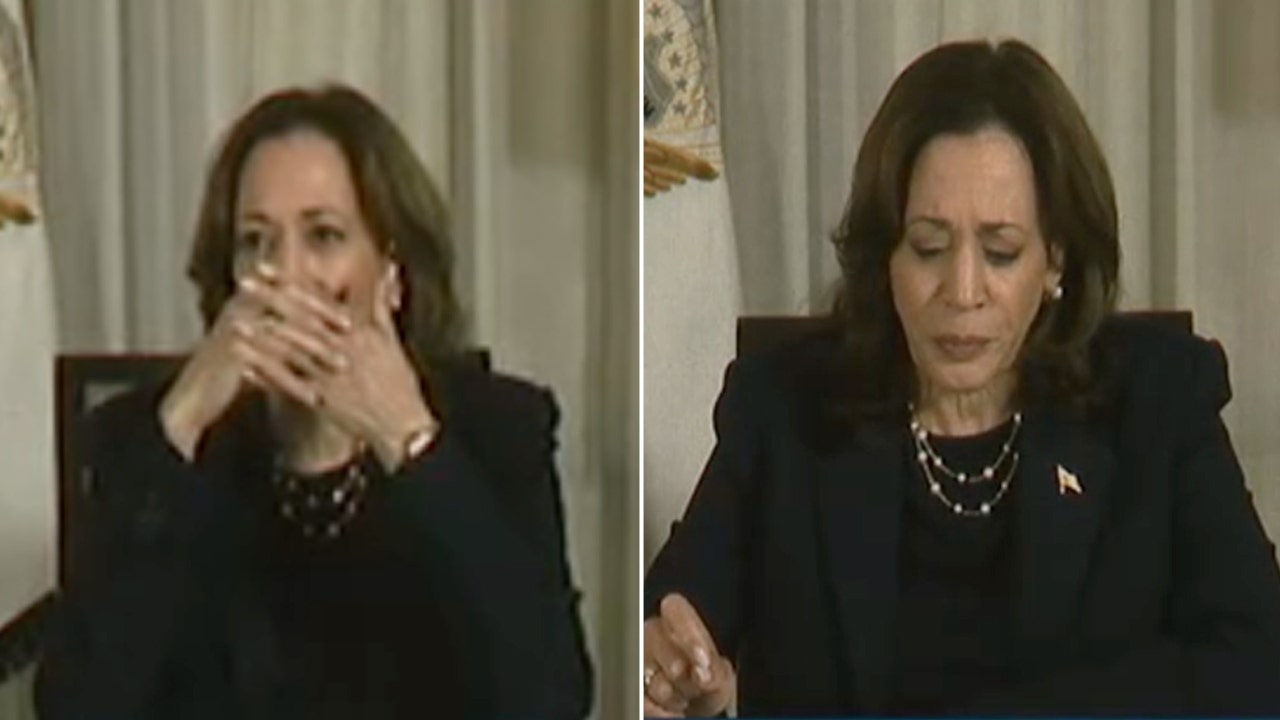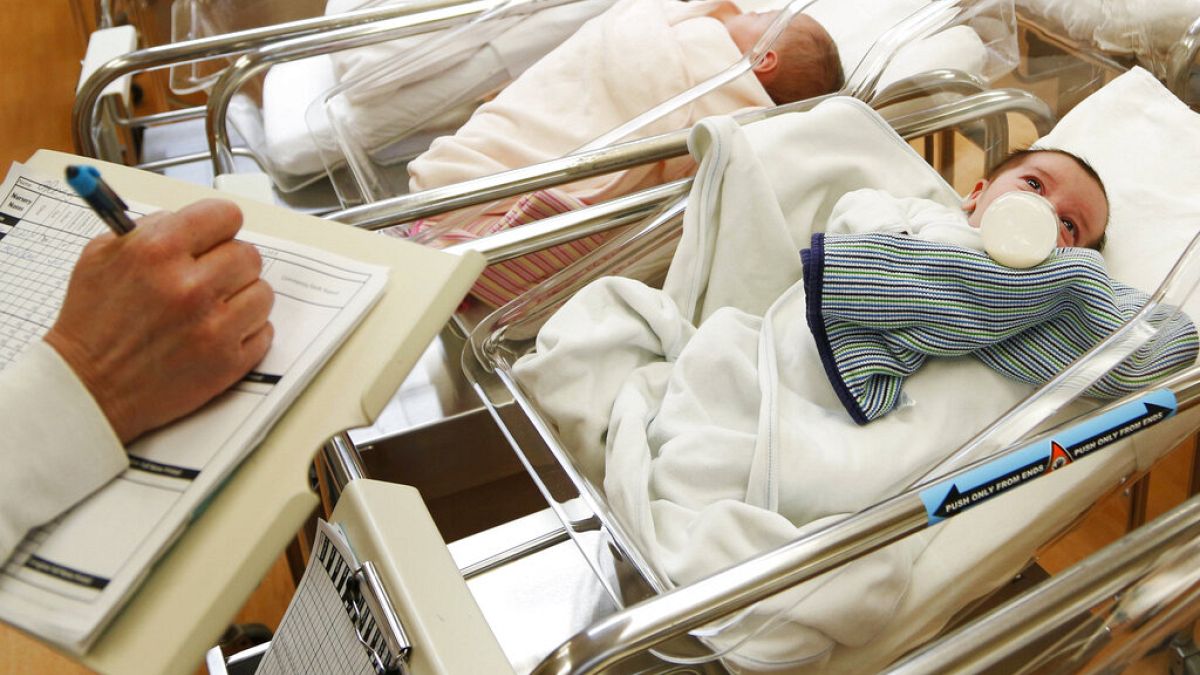Northeast
Same poll taken one month apart shows which presidential candidate has momentum in key states
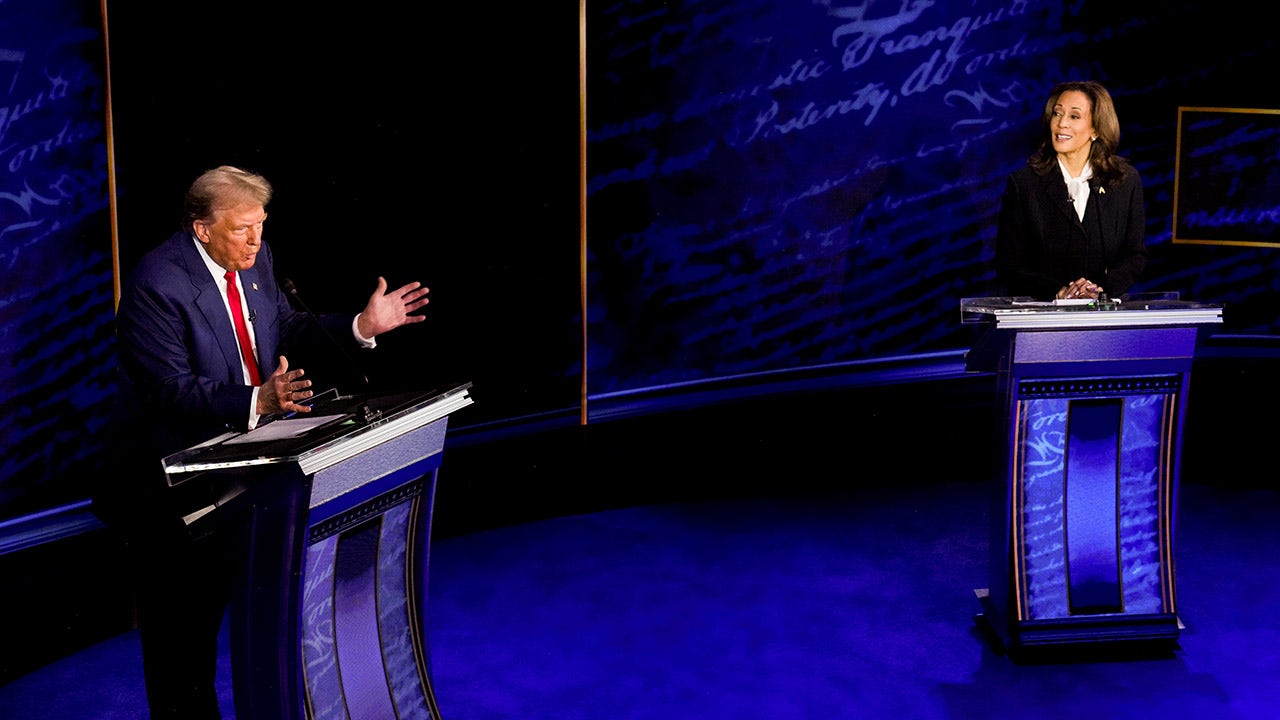
SCRANTON, Pennsylvania — With less than four weeks until Election Day in November, new polls in three crucial battleground states indicate former President Trump is making gains, but he remains in a toss-up race with Vice President Kamala Harris.
According to surveys from Quinnipiac University, Harris, the Democratic presidential nominee, holds a 49% to 46% advantage over Trump, the Republican standard-bearer, in Pennsylvania.
But the former president edges the vice president 50% to 47% in Michigan and 48% to 46% in Wisconsin.
Harris’ three-point edge in Pennsylvania is down from a 6-point lead in Quinnipiac’s previous survey from a month ago.
WHAT THE LATEST FOX NEWS POWER RANKING IN THE PRESIDENTIAL RACE SHOW
Former President Trump and Vice President Kamala Harris appear during their first and likely only debate in Philadelphia on Sept. 10. (Doug Mills/The New York Times/Bloomberg via Getty Images)
The results in Michigan, where Trump is up by 3 points, are a switch from last month, when Quinnipiac’s survey indicated Harris leading by 5 points.
And in Wisconsin, where the new poll gives the former president a 2-point edge, it’s a slight change from September, when the vice president held a 1-point edge.
CHECK OUT THE LATEST FOX NEWS POLLS IN THE HARRIS-TRUMP SHOWDOWN
“That was then, this is now. The Harris post-debate starburst dims to a glow as Harris enters the last weeks slipping slightly in the Rust Belt,” Quinnipiac University Polling Analyst Tim Malloy said.
Pennsylvania, Michigan and Wisconsin, along with Georgia, North Carolina, Arizona and Nevada, had razor-thin margins that decided President Biden’s 2020 White House victory over Trump. And the seven states are likely to determine if Trump or Harris wins the 2024 presidential election.
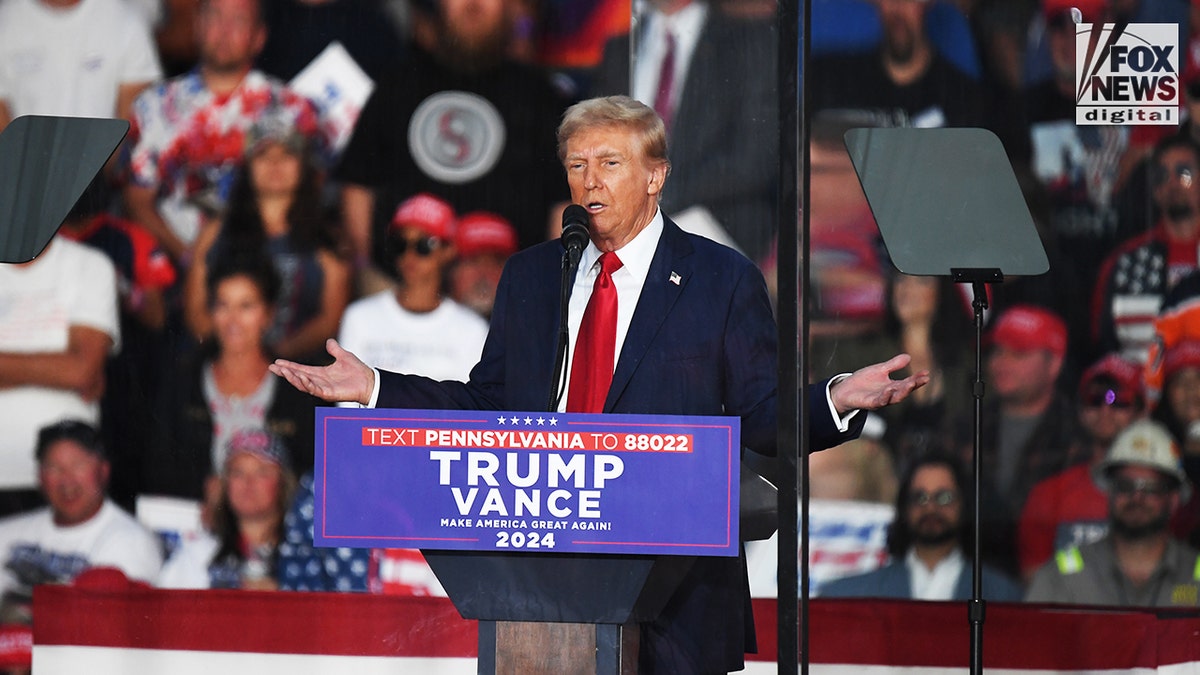
Former President Trump addresses the crowd at a rally in Butler, Pennsylvania, on Saturday. The rally was at the same location as the one on July 13 at which an assassination attempt was made on Trump’s life. (Matthew McDermott for Fox News Digital)
Pennsylvania, Michigan and Wisconsin are also the three Rust Belt states that make up the Democrats’ so-called “Blue Wall.”
The party reliably won all three states for a quarter-century before Trump narrowly captured them in the 2016 election to win the White House.
Four years later, in 2020, Biden carried all three states by razor-thin margins to put them back in the Democrats’ column and defeat Trump.
Both the Democratic and Republican presidential nominees, as well as their running mates, have made repeated stops in the three states this summer.
Trump is holding campaign events on Wednesday in Scranton and Reading, Pennsylvania. And Harris returns to Pennsylvania early next week for a stop in Erie.
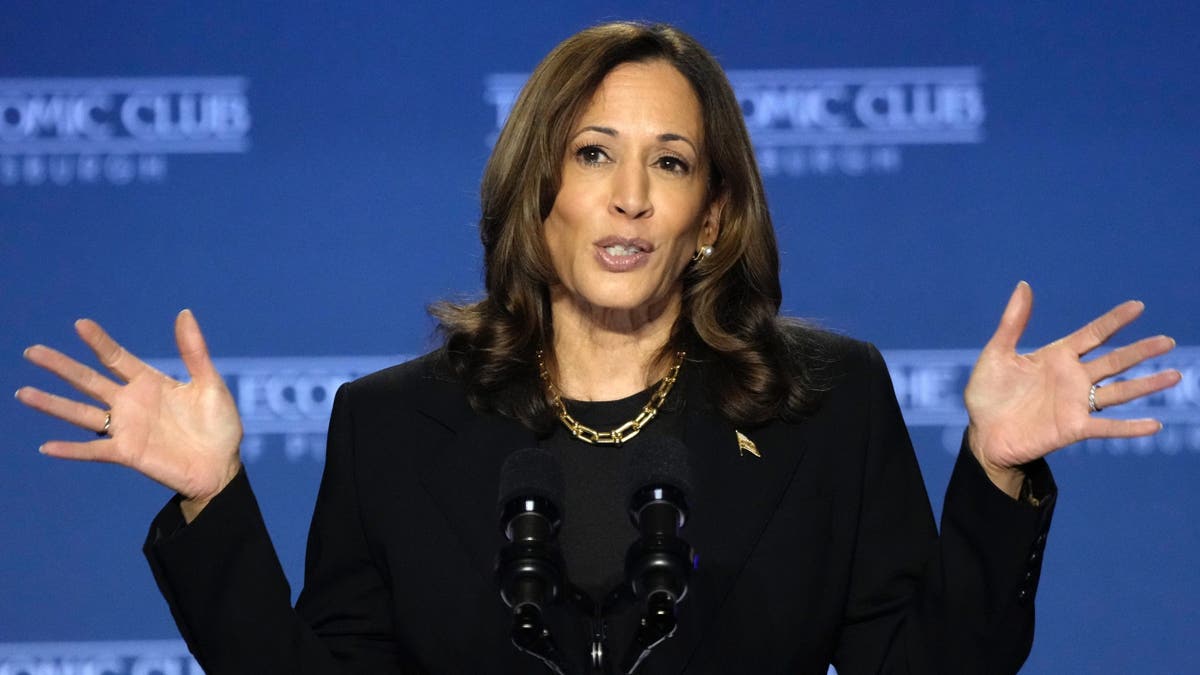
Vice President Kamala Harris addresses the Economic Club of Pittsburgh on the Carnegie Mellon University campus in Pittsburgh on Sept. 25. (AP Photo/Gene J. Puskar)
Both candidates have also campaigned in Michigan and Wisconsin over the past few days.
All three states are also holding crucial Senate elections that will likely determine if the GOP wins back the chamber’s majority.
In Pennsylvania, the Quinnipiac University poll indicates Democratic Sen. Bob Casey leads Republican challenger Dave McCormick 51% to 43%.
According to the survey, in the race to succeed Democratic Sen. Debbie Stabenow of Michigan, Democratic Rep. Elissa Slotkin and former Rep. Mike Rogers are deadlocked at 48%.
And in Wisconsin, Democratic Sen. Tammy Baldwin edges Republican challenger Eric Hovde 50% to 46%, the poll indicates.
The Quinnipiac University polls were conducted Oct. 3-7, with 1,412 likely voters in Pennsylvania, 1,007 likely voters in Michigan and 1,073 likely voters in Wisconsin questioned.
The sampling error in Pennsylvania is plus or minus 2.6 percentage points. In Michigan, it’s plus or minus 3.1 percentage points. And, in Wisconsin, it’s plus or minus 3 percentage points.
Get the latest updates from the 2024 campaign trail, exclusive interviews and more at our Fox News Digital election hub.
Read the full article from Here

New York
When Harlem Was ‘as Gay as It Was Black’

Two Black men, in tuxedos, clasp hands and dance in a smoky foreground in a scene from “Looking for Langston,” the 1989 film that reevaluated gay and lesbian contributions to the Harlem Renaissance.
A map of Manhattan with a boundary drawn around Harlem, just north of Central Park.
A map shows the borders of Harlem, which, south to north, extends from the top of Central Park to the area above 145th Street, and, west to east, from St. Nicholas Park to Fifth Avenue.
A black-and-white photograph of Ma Rainey’s Georgia Jazz Band. Ma Rainey, in a dress and headband, is surrounded by five Black male musicians playing, from left, trombone and trumpet.
JP Jazz Archives/Redferns Many L.B.G.T. performers and entertainers of the Renaissance used their artistry to express their sexuality. Others went to great lengths to keep their private lives hidden. Only recently have scholars been able to unpack their complicated lives, providing a brighter, clearer vision of who they were.
On Stage and Off
A map highlighting various points in Harlem.
A map of Harlem with a location labeled “Ma Rainey at the Lincoln Theater” near 135th Street and Lenox Avenue.
Map with location labeled “Gladys Bentley at the Clam House” near 135th Street.
Map with location labeled “Bessie Smith at Hotel Olga” in the northernmost part of Harlem.
Map with a location labeled “Jimmie Daniels” on 116th Street, and a photograph of Jimmie Daniels Restaurant.
Map with a location labeled “Ethel Waters” near Colonial Park in northwest Harlem, and a photograph of 580 St. Nicholas Avenue, where she lived for a time.
Map with a location labeled “Edna Thomas” in south Harlem, and a photograph of 1890 Seventh Avenue, where she lived.
Map with a location labeled “Georgette Harvey” south of 116th Street.
Map with a location labeled “Alberta Hunter” north of 135th Street, and a photograph of 133 West 138th Street, where she lived.
Patrons of the Savoy Ballroom dancing the Lindy Hop and other dances.
As the period flourished, so did the number of public and semi-public spaces for L.G.B.T. life — theaters, lodges, cabarets, salons, nightclubs, parks, bathhouses, streets — developed, said Shane Vogel, a professor of English and African American Studies at Yale University and the author of “The Scene of Harlem Cabaret: Race, Sexuality, Performance.”
Each location “created spaces for people in Harlem to experience new kinds of social contacts and erotic possibilities that weren’t as widely available in the decades before the Harlem Renaissance,” he said.
Out and About
Patrons of the
Map with a location labeled “Hamilton Lodge at Rockland Palace” at the very top of Harlem, and a photograph of 280 West 155th Street, where the venue was located.
Map with a location labeled “Ubangi Club” at 131st Street and Seventh Avenue, and a photograph of the building where the venue was located.
Map with a location labeled “Swing Street” at West 133rd Street, running between Lenox and Seventh Avenue, and a photograph of The Nest, one of the nightlife venues on that block.
Map with a location labeled “The Cotton Club” at 142nd Street and Lenox Avenue, and a photograph of the exterior of the club, with a large marquee and cars in the foreground.
Map with a location labeled “Clam House” at West 133rd Street, near Seventh Avenue, and a photograph of the exterior of the club, with an awning, flanked by two cars.
Map with a location labeled “Savoy Ballroom” on Lenox Avenue, between 140th and 141st Streets, and a photograph of the exterior of the club, with a large marque that reads “SAVOY.” Pedestrians walk in the foreground.
Map with a location labeled “Mount Morris Bathhouse” at 28 East 125th Street, just outside the east parameter of Harlem, and a photograph of the building, with a man crossing the street in the foreground.
Map with a location labeled “Harlem Y.M.C.A.” at 180 West 135th Street, near Seventh Avenue, and an illustration of the building, which rises high above its neighbors.
Map with a location labeled “Hotel Olga” at Lenox Avenue and 145th Street, and a photo of the building.
Map with a location labeled “Lafayette Theater” at 2247 Seventh Avenue, and a photo of the exterior of the theater, with a marquee, arched windows and a sign or flag hanging above them.
Robert W Kelley/The LIFE Picture Collection, via Shutterstock While race was commonly explored among the artists, thinkers and writers of the Renaissance, some openly broached the subject of sexuality, which was viewed as scandalous. For others, any references may have been carefully coded and more difficult to detect.
The Smart Set
Map with a location at the far bottom of the map labeled “Alain Locke,” “Washington D.C.” and an icon pointing down.
Map with a location labeled “Nella Larsen” at 236 West 135th Street, near Eighth Avenue.
Map with a location labeled “Langston Hughes” at 20 East 127th Street, north of Mount Morris Park, just outside the parameters of Harlem.
Map with a location labeled “Countee Cullen” at 104 West 136th Street, near Lenox Avenue.
Map with a location labeled “Richard Bruce Nugent” at 267 West 136th Street, near Eighth Avenue.
Map with a location at the far bottom of the map labeled “Carl Van Vechten,” “150 West 55th Street” and an icon pointing down.
Map with a location labeled “Harold Jackman” at 7 West 134th Street, just outside the east perimeter of Harlem.
Map with a location labeled “Maurice Hunter” at 254 West 135th Street, between Seventh and Eighth Avenues.
Map with a location labeled “Claude McKay” at 147 West 142nd Street, between Seventh and Lenox Avenues, and a photograph of the exterior of the building.
A photograph of the Alexander Gumby Book Studio, with a semi-circle of people sitting and chatting or reading.
Alexander Gumby collection, Rare Book & Manuscript Library, Columbia University
Private spaces in Harlem — mainly homes and apartments — opened doors to the kind of intimate socializing and sexual experimentation that could not exist at large nightclubs or segregated venues. Away from the public eye, these spaces held invite-only soirees or rent parties that were primarily spread through word of mouth.
Behind Closed Doors
Map with a location labeled “A’Leila Walker and the Dark Tower” at 108 West 136th Street, on the far east side of Harlem, and a photograph of the exterior of the building.
Map with a location labeled “Wallace Thurman” at 267 West 136th Street, near Eighth Avenue, and a photograph of the block, with a car coming toward the camera.
Map with a location labeled “Iolanthe Sydney” at 267 West 136th Street, near Eighth Avenue.
Map with a location labeled “Alexander Gumby Book Studio” at 2144 Fifth Avenue, on the far east side of Harlem.
Map with a location labeled “409 Edgecombe Avenue” at the far north section of Harlem, and a photograph of a cluster of three high-rise buildings.
Harlem in 1938.
Efforts to reexamine Harlem’s queer history have helped audiences reimagine Renaissance-era spaces and celebrate aspects of its everyday life that were underground.Looking Back, Through a Fresh Lens
Boston, MA
More MCAS ballot question ads flood in ahead of election, Boston mayor ‘torn’ on MCAS stance

The battle over the MCAS ballot question continued to heat up, with a new ad campaign joining the legions flooding televisions and the Boston mayor chiming in with her stance on the issue.
“Massachusetts students attend the best-ranked schools,” argues a new television ad from the opposition group Protect Our Kids’ Future: No on Question 2. “But Question 2 will gut our education system and leave us with lower standards than Mississippi and Alabama.”
The MCAS ballot question would nix the state’s standardized testing graduation requirement for high school students, replacing it with criteria determined by local districts informed by state standards. Students would continue to take the test as an assessment tool.
The No on Question 2 group bought a 30-second and 15-second ad, including a featured parent speaking arguing the effort would “weaken” high standards for her kids.
The latest two ads by supporters of the MCAS graduation requirement follows a similar 30-second ad released in support of the question Tuesday by the Committee for High Standards Not High Stakes, largely led by the Massachusetts Teachers Association.
“We all want to maintain our school’s high standards, and we all agree a single standardized test shouldn’t keep a student from graduating,” state several speakers, including teachers, parents and a pediatrician featured in the ad. “Question 2 replaces the high stakes, high stress MCAS and allows teachers to work with each learner using grades and assessments to measure who’s prepared to succeed after graduation.”
A Suffolk University/Boston Globe poll released Tuesday showed 58% of surveyed Massachusetts voters said they would vote in favor nixing the MCAS graduation requirement, while 37% said they would vote no.
Both sides have highlighted a range of endorsements in recent weeks.
MCAS supporters touted the endorsement of the Black Economic Council of Massachusetts and The Alliance for Business Leadership on Monday. They noted Massachusetts Gov. Maura Healey and Secretary of Education Patrick Tutwiler, among other state leaders, favor the MCAS requirement.
Meanwhile, those in favor of Question 2 boasted the endorsement of Sen. Elizabeth Warren and Rep. Ayanna Pressley the week before, along with a group of local business leaders and State Auditor Diana DiZoglio.
Boston Mayor Michelle Wu chimed in on a live WGBH segment Tuesday, saying she is “torn” and will not take a public position on the question.
Wu noted the importance of “high standards and clear standards for our education system” but said “tests should not be used in a high-stakes way, especially in a one-size-fits-all mechanism.” She expressed concern with doing away with the test through this ballot measure, adding that “more nuance or more language” could be worked in through a legislative process.
“There are elements that I think are important around the need to reflect the diversity within our learning communities and the negative consequences that can happen when a one-size-fits-all standard can be applied,” Wu said. “But I’m not comfortable with the alternative that this puts in place in terms of what would replace that to maintain high standards.”
Massachusetts voters will see Question 2 on the ballot for the Nov. 5 general election.
Pittsburg, PA
Proposed Allegheny County property tax increase opposed by some councilmembers

PITTSBURGH (KDKA) — Homeowners flooded Allegheny County Council offices with calls on Wednesday, complaining about a plan for a major property tax hike. Some councilmembers say they just can’t support an increase as large as the county executive wants.
Since the budget announcement Tuesday, county councilmembers say they have gotten an earful from their constituents and say they’ve heard enough: the 46% property tax increase is dead on arrival.
Citing flat revenues, an end to federal COVID aid and rising costs, Innamorato dropped a bomb.
“So, today we are asking for a 2.2 mill increase,” she said.
Since then, councilmembers have heard howls from their constituents about an unprecedented 46 percent property tax increase.
“This is just way outside the bounds of what we could potentially take back to the taxpayers,” said Republican Sam DeMarco.
Counting heads, Council President Pat Catena says there are already enough votes to kill the increase.
“I know Councilmember Futules is against it, I know Councilman Palmosina is against it,” Catena said.
“We have to go back to the drawing board and see where cuts can be made. It’s that simple,” he added.
Innamorato said the hike is needed to meet costs and stave off disaster. The surplus is being deleted and costs are rising, especially for health care at the Kane hospitals and the county jail, where total costs have risen more than $20 million.
“And if we keep on the pace we’re on now, we could completely deplete our reserves in two years, which would be catastrophic for our bond rating and leave us in a precarious situation in the case of an emergency,” Innamorato said.
But councilmembers say she still wants to fulfill a progressive agenda with spending on things like child care, rental assistance, climate change initiatives and housing for those experiencing homelessness. They want her to sharpen her pencil to reduce some of those costs, noting that one of her first actions in office was to raise the wages of county employees to a minimum of $18 an hour.
“Last night we saw where that money is going to come from. She intends to take it from the taxpayers,” DeMarco said.
Controller Corey O’Connor says the administration needs to do more to produce other revenue by fostering economic development.
“The frustrating part for all of us should be is there’s no vision for growth, development, bringing in jobs. Because all of that, you’re not going to tax your way out of decline,” O’Connor said.
Over the next few weeks, councilmembers say they’ll be going over this budget with a fine-tooth comb, making all the necessary cuts to bring this tax increase down to size.
-
/cdn.vox-cdn.com/uploads/chorus_asset/file/25439572/VRG_TEC_Textless.jpg)
/cdn.vox-cdn.com/uploads/chorus_asset/file/25439572/VRG_TEC_Textless.jpg) Technology1 week ago
Technology1 week agoCharter will offer Peacock for free with some cable subscriptions next year
-

 World6 days ago
World6 days agoUkrainian stronghold Vuhledar falls to Russian offensive after two years of bombardment
-

 World7 days ago
World7 days agoWikiLeaks’ Julian Assange says he pleaded ‘guilty to journalism’ in order to be freed
-

 Technology6 days ago
Technology6 days agoBeware of fraudsters posing as government officials trying to steal your cash
-

 Health4 days ago
Health4 days agoHealth, happiness and helping others are vital parts of free and responsible society, Founding Fathers taught
-

 Virginia1 week ago
Virginia1 week agoStatus for Daniels and Green still uncertain for this week against Virginia Tech; Reuben done for season
-

 Sports5 days ago
Sports5 days agoFreddie Freeman says his ankle sprain is worst injury he's ever tried to play through
-

 News4 days ago
News4 days agoLebanon says 50 medics killed in past three days as Israel extends its bombardment











